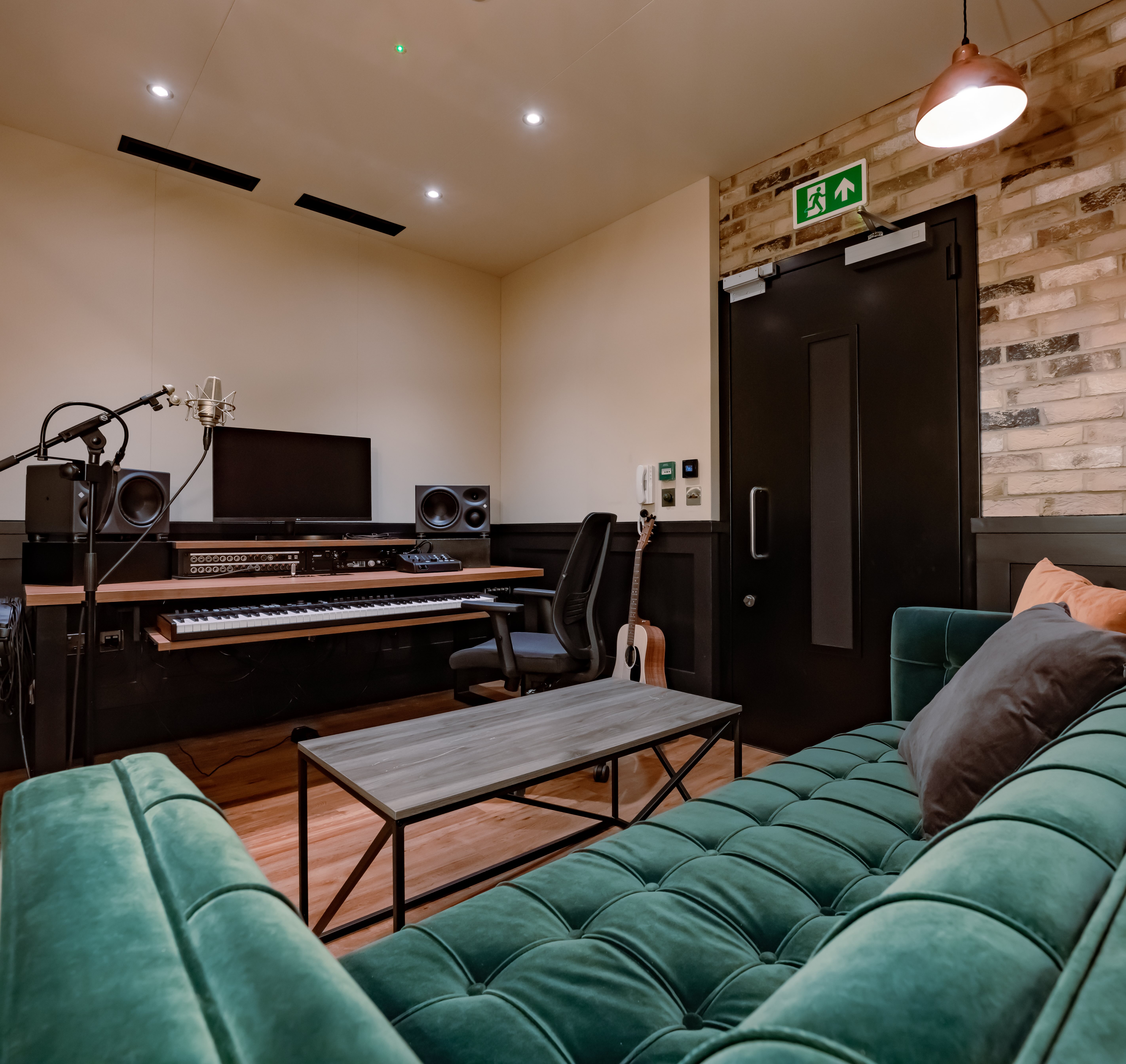Mic Level vs Line Level: Understanding the Key Differences
Mic level and line level do different jobs.This guide shows what each signal is, how to route them, and when to use a preamp, DI, or pad for clean, reliable sound.
Mic level is the faint analogue signal from a microphone, typically 0.1 to 10 mV, about −80 to −40 dBV. It usually travels on balanced XLR and expects a mic preamp to reach working level.
Line level is the stronger standard between devices such as interfaces, mixers, and outboard, targeting −10 dBV on consumer gear or +4 dBu on professional systems.
Why this matters
Mismatch the two and you get trouble. Mic into line is whisper quiet and noisy, line into a mic input clips and distorts. Route to the right input or use a simple converter to keep headroom and noise where they should be.
Getting the wrong levels can lead to distorted audio or almost no sound at all, so it’s vital to understand how these levels function and how to match them to the correct input or device.
Reference levels: −10 dBV about 0.316 V RMS and +4 dBu about 1.228 V RMS, are standard in pro audio.
What is the mic level?
Mic level is the tiny analogue voltage a microphone generates, typically 0.1 to 10 millivolts, roughly −80 to −40 dBV (based on Shure's published ranges). Because it is weak, it needs a mic preamp to reach line level for use with interfaces and mixers. Most mics connect on balanced XLR to keep noise low.
If you skip the preamp you will get almost no level or a noisy hiss. In practice, use a mic input or an external preamp, then send line level onward. In live and recording setups this applies to both wired mics and wireless systems, where the receiver’s output is set to mic or line to match your gear.
Mic level tips
Some quick points on mic levels
- Mic-level is the low-voltage signal output from a microphone.
- Mic-level signals are weak (around 1 millivolt or less).
- They need to be amplified by a preamp to reach line-level for use in mixers, interfaces, or amplifiers.
- Mic-level signals use balanced XLR to reduce noise interference.
- Use gain control to adjust the mic-level signal to avoid distortion or noise.
- Mic-level is around -60 dBV to -40 dBV.
- A mic-level device connected to a line-level input results in a low, unusable signal.

What is the line level?
Line level is the standard signal strength used to pass audio between equipment like mixers, audio interfaces, and outboard.
There are two common references: −10 dBV for consumer gear about 0.316 V, and +4 dBu for professional gear about 1.228 V. Both can sound excellent when you match outputs to the right inputs.
Because line level is much stronger than mic level, it doesn't need extra amplification in normal use. Ensure you feed line outputs into true line inputs on your mixer or interface. Many interfaces offer switchable mic, line, or instrument settings, pick the one that matches the source.
If you plug a line output into a mic input you will usually overload the preamp and cause distortion. Use the correct input, or an attenuator or pad if you must land on a mic stage. Bear in mind, a typical drop from line to mic requires tens of decibels of attenuation.
Line level tips
Some quick points on line level:
- Line-level is the standard signal strength used for transmitting audio between equipment.
- It's much stronger than the mic level, about 0.316 V at −10 dBV and about 1.228 V at +4 dBu.
- Line-level signals don't need amplification for most audio devices.
- Used with equipment like mixers, amplifiers, keyboards, and audio interfaces.
- Line-level uses balanced (TRS, XLR) and unbalanced (RCA, TS) cables.
- Connecting to a mic-level input results in it being too loud and distorted.
- Use a mic preamp to raise mic to line. A DI converts instrument to balanced mic level. Use an attenuator or pad to drop line to a mic stage when required.
Understanding the difference
Reviewed 16 October 2025
If you're getting some problems with distortion and low volume, then chances are it's coming from your levels.
When you're connecting different devices, such as an electric guitar, a microphone, or a media player, to a mixing desk. Powered speakers connect to line outputs, not inputs, and amp driven speaker outputs must never be fed into mixer inputs.
A microphone should be connected to a mic input, but an audio interface or synthesiser would want to be connected to a line input.
Messing up your signals and connections is what causes the weak signal or distortion. Additionally, some professional equipment comes with a line-level switch feature, allowing you to toggle between mic-level and line-level settings.
This is especially useful when dealing with multiple signals from different devices.
How do I boost mic level to line level?
Since mic-level signals are weak, they need to be boosted to line level to be usable in most recording systems.
If you've got a preamp, this should be no problem. A preamp is designed to increase the voltage of a mic signal. Most audio interfaces and mixers include built-in preamps to help with this.
When you’re working with mic-level inputs, adjusting the gain control properly ensures that you're boosting the signal without introducing unnecessary noise.
If you don’t have a preamp, you may need a DI box (Direct Injection box) to convert mic-level signals to line level for professional use.

How do I handle different audio levels?
If you work with sound, you're likely to deal with various devices that output different levels of audio signals, including instrument-level signals from electric guitars or basses. The challenge comes in managing these different audio levels while ensuring clean, high-quality sound.
You might encounter situations where you need to combine multiple signals (such as from microphones, instruments, and line-level devices) into the same recording chain.
Knowing how to manage gain and signal levels effectively is crucial, having an audio interface with multiple inputs can help you manage this.
You should always check the output signal level of your equipment and make sure you're connecting it to the right input.
Recap
Mic levels and line levels need different voltages and have different inputs. Understanding what goes where is important if you want your recordings to sound right.
Luckily, understanding the differences between these two levels isn't too complicated. If ever in doubt, your equipment will probably have instructions along with it, to tell you exactly what input it needs.
Follow this guide and you'll be using the correct input levels in no time.
Pristine audio recording at TYX Studios

At TYX Recording Studios, we understand how critical it is to get your audio levels just right. That’s why we offer the best professional equipment, from high-end preamps to top-tier audio interfaces, ensuring you can work with both mic-level and line-level signals seamlessly.
Whether you’re recording vocals, and instruments, or working with multiple signals, our expert team is here to help you achieve the clean, high-quality sound you need.
Get in touch today to book a session at our studio and experience professional-grade audio recording at its finest.
Frequently Asked Questions
Not directly. A mic outputs mic level and needs a mic preamp. Use a mic input on your interface or mixer, or an external preamp set to line out.
You will usually overload the preamp and get harsh distortion. Use a true line input instead, or insert a fixed pad to drop the level first.
Mic level is tiny, roughly 0.1 to 10 mV, about −80 to −40 dBV. Line level is stronger, either −10 dBV about 0.316 V or +4 dBu about 1.228 V. Instrument level is high impedance and somewhere in between, route it to a Hi Z input or through a DI.
Use a mic preamp, either built into your interface or as an outboard unit. Inline boosters can help some dynamics, but you still land at a mic pre and then go to line. A DI is not for boosting mics.

How to Record Vocals Like a Pro
Discover how to record vocals like a pro. Build a reliable signal path, treat your room, position your mic stand, and coach confident performances. With the right setup and workflow, you’ll capture clear, high-quality vocals ready for mixing.

How to Record Bass Guitar Like a Pro
Learn how to record bass guitar that locks with drums, translates on small speakers, and needs less fixing later. Use this checklist-driven guide and work faster. This bass recording guide preserves the original flow and adds precise updates where needed.
















